Big time international badminton competition is getting back into the groove with non-stop action from the second week of January onwards. Our preview specialist, Aaron Wong, also shakes off the rust to clarify how the rescheduled tournament calendar works but its nomenclature gets in the way amongst other things.
By Aaron Wong. Photos: Badmintonphoto
Eleventh hour
Let’s face it. The state of the world feels the same as 2020 because COVID-19 continues to interrupt the rhythm of our lives. To manage to some degree, we’ve begun practising the tricky dual psychology of staying optimistic in our outlook while understanding the need to be pragmatic when it comes to accepting an ever changing daily response to the pandemic.
Basically, everybody is learning to manage feeling excited one minute, disappointed the next, and knowing it’s all about making the best of the situation.
Joy of joys, the Badminton World Federation (BWF) decided to resume the HSBC World Tour for January 2021 after some months of the global numbers of infections declining. Unfortunately, a third wave of the pandemic has put paid to the participation of the current two leading men of the sport just as their teams were heading off to the airport – a Japanese maestro of singles and an Indonesian doubles exhibitionist. Still, the shows must go on.
What are the Thailand Opens?
Yes, there are two and they are side by side. In fact, including the World Tour Finals, three tournaments shall unfold in succession in Bangkok. All are part of the 2020 HSBC World Tour calendar and this extended season brings it to a total of 10 events run out of the 28 originally scheduled.
Neither of these Thailand Opens is a rebranding of the 2021 edition of the Princess Sirivasannavari Thailand Masters. That Super 300 tournament, typically recurring in January, has been cancelled this time around.
Rather, the original Super 500 World Tour event and postponed Thailand Open (its prestige elevated from Grand Prix Gold status starting in 2018) from around July/August has been split into two tournaments and increased the overall winnings by a factor of almost six, hence their freshly minted Super 1000 statuses, which is a boon for the athletes since their livelihoods have been drastically curtailed by the cancellation of close to all of the 2020 season following the All England last March.
It’s the richest badminton month of all time with in excess of US$3 million prize money on offer without the world number 1s in four of the five disciplines. In fact, a fifth discipline – women’s singles – is suffering the drop outs of its second and third seeds. It’s a bright side from the standpoint of those who depend on prize money for their income.
Running a calendar year tournament in the following year isn’t new. The 2010 Superseries Finals was held in January 2011. Neither is having major tournaments with the same name, with the two China Opens being a precedent (one being the rebranded China Masters). Our favourite commentating double act, Gillian Clark and Steen Pedersen, once opined in the middle of an Anthony Ginting-Chen Long match that the latter aspect is genuinely confusing for the layperson. Whereas I’m just saying that insisting on this naming convention necessitated five additional paragraphs in this piece.
Who’s missing?
This week two bombshells dropped, men’s singles world number 1 Kento Momota and men’s doubles world number 1 Kevin Sanjaya Sukamuljo (pictured with Marcus Fernaldi Gideon) tested positive for COVID-19 as they prepared to board their respective flights to Bangkok. Although the rest of the Japanese team’s results were negative, their association withdrew the entire squad.
With the retirements of Lin Dan in 2020 and Lee Chong Wei in 2019, it’s fair to say Momota and Sukamuljo filled the vacuum as badminton’s new leading men. Although that is not to suggest the incumbents fill stadiums to same extent, in terms of winning majors in a single year, they have surpassed their predecessors.
China’s army weren’t listed on the draw in the first place, which is a blow for the mixed doubles competition overall but favourable for the home pair Sapsiree Taerattanachai / Dechapol Puavaranukroh (pictured top), who are installed as the top seeds.
More importantly, what’s missing?: The rivalries
The cult of personality era surrounding Lee and Lin has moved on to simply focusing on a broader yet still small bunch of key rivalries across various disciplines.
Sadly, we have a little longer to wait for Momota-versus-Ginting or Momota-versus-Antonsen encounters in men’s singles.
With all Chinese players not participating, the same is true for the most recent first-time world number 1 in women’s singles Chen Yufei. Her most defiant opponents have lately been a resurgent Tai Tzu Ying (pictured), the up-and-coming An Se Young, and current World Champion Pusarla Venkata Sindhu.
The late stay-at-home order for all Japanese has left the women’s singles and women’s doubles draws with five seeds missing altogether. However, the greatest loss is an All England men’s doubles rematch between Hiroyuki Endo / Yuta Watanabe and world number 1s Gideon/Sukamuljo which would’ve been a reasonable quarter-final presumption at the Toyota Thailand Open.
What’s really interesting? The Sprinters
The most obvious thing everybody is keen to observe is whether players are still on form given a break of three quarters of the year from being on our screens.
January’s performances on their own are unlikely to be conclusive.
One of the more interesting and genuinely exciting aspects in an (postponed) Olympic year is looking out for the possibility of a dramatic blossoming into maturity of a prodigy just in time to achieve gold. Such a fairytale transpired during the 2012 when China’s Li Xuerui, eventual winner of the London Games, embarked upon an unexpected and undeniable majors victory spree that saw her name chosen for qualification instead of one of the three Wangs (Xin, Yihan and Shixian) who up till then were more experienced and higher ranked for longer as well as each having reached world number 1.
The women’s singles parallel du jour is Korea’s 18-year-old An Se Young (pictured), whose sensational rise into the world’s top 10 from exactly rank 100 took just nine months. Not to mention, An’s stratospheric trajectory has occurred during a period that Gillian and Steen have described as women’s singles being the most competitive of badminton’s disciplines.
In a non-Olympic year and within Japan’s contemporary pedigree in women’s doubles of consistently maintaining about four pairs within the top 10, Mayu Matsumoto / Wakana Nagahara achieved fame cut from the same cloth as Li Xuerui by surging from outside the frame past not three but four compatriot pairs, including Rio champions Matsutomo/Takahashi, in 2018 to twice become World Champions.
Korea’s Kim So Yeong / Kong Hee Yong have been the next meteoric rise to turn heads in women’s doubles and appeared to be maturing in time for the original Tokyo 2020. If precedents are anything to go by, these Koreans should still be fresh for the rescheduled Olympic Games if they are the real deal.
Might the Indian youngsters Satwiksairaj Rankireddy / Chirag Shetty (pictured) be such a phenomenon for men’s doubles? Another Indian, former world number 1 junior, Lakshya Sen is a long shot while Malaysia’s Lee Zii Jia is a fruit that could ripen at the right time in singles.
As for mixed doubles, the indicators aren’t there for Olympic gold but there’s an outside possibility another medal colour could be earned by Europeans or (given Brexit) the British.
Reinventions
Previously we were circling those hinting at dimensions to come, now let’s discuss the stalwarts we’ve unconsciously written off not as far as quality but extra dimensions.
Nowadays there are more hours of footage of players than ever and one can easily fall into a false sense of confidence of presuming those names that have lingered at the top for a while are the finished product but some can baffle us with inconceivable reinventions of themselves.
We’ve witnessed it mid-career with Fu Haifeng and Mohammad Ahsan (pictured with Hendra Setiawan) turning into as reliable or even superior front court doubles players compared to their peers whose specialisation it is, Rio silver medallist Tan Wee Kiong for instance.
Saina Nehwal and Akane Yamaguchi also spring to mind as players who’ve added strings to their bows where it wasn’t thought possible based on their previous performances.
New examples of this sort are tricky to preview because we’re, especially their opponents, meant to be completely taken by surprise by the effectiveness of the transformation. A possible candidate flying under the radar could be Korean former world number 2 Kim Gi Jung, now playing as an independent and partnering with Lee Yong Dae (pictured).
Kim’s even better reading the game makes him undaunted by the chaos of speed that is men’s doubles no matter where his responsibilities on court lie. For quite similar reasons but already on the radar is the absent Hiroyuki Endo.
Korean women’s doubles world number 10 Jung Kyung Eun in recent times has also been successfully playing smarter not faster like Kim and Endo but is nowhere to be found in either draw along with her young partner Baek Ha Na. Jung and Baek are busy later this month with Korea’s national team tryouts, which will require the attendance of everyone not currently in a position to qualify for the Olympics. World number 9 Koreans Chang/Kim received a special exemption and appear twice in Thailand in January as the sixth seeds.
Resuming now is a good enough reason
There are still questions and entertainment aplenty and having been starved of fresh broadcasts for months, the disappointment of Momota, Sukamuljo, Japan and China’s absences should be fleeting the moment we begin tuning in.
Fear not, only the HSBC World Tour is resuming. Olympic qualification recommence from the Swiss Open in March so missing out on any of the three events in Bangkok isn’t an Olympic disadvantage.
Watch out for the charge of the home players as Thailand possess broad competence across the disciplines, just without marquee names in the men’s categories and women’s doubles.
Fingers crossed the 2020 World Tour Finals in the third week of January brings back most Japanese and Chinese to make the seedings more meaningful. Its cast list is unknown at this point but you’d think Momota and Sukamuljo’s appearances would remain doubtful.
Anders Antonsen (pictured) is the highest profile athlete who has contracted and recovered from COVID-19 so his subsequent condition will be keenly followed by all. We can expect him to vlog about the experience too.
The ongoing pandemic means we have to be prepared for imperfect attendance at the Olympic badminton and grapple with its imperfect meaning. Unlike its significantly more financially rewarding racquet sport cousin tennis, badminton has long placed hallowed significance on Olympic gold whereas the former seems happy with simply being part of a tradition of global solidarity.
Shouldn’t we be getting used to the new normal? It’s tough, the rules keep changing but we’re getting used to not entirely wishing it were back to like it was before. And that includes the chance to reconsider how we talk about an international player’s merits in 2021. The old, rigid and limited paradigm need no longer apply and a little more respectfulness is a step in the right direction.
Organising three major COVID safe events must have entailed an unprecedented level of due diligence. As with taking the same amount of time to prepare a meal for one as it is for three, the hosting of this event would’ve been as complex as had Japan and China joined so all involved ought to be no less proud and the audience no less appreciative.
Yonex Thailand Open – Early Rounds of note:
Women’s singles
R32: Yeo Jia Min (SGP) vs. Ratchanok Intanon (THA) [4]
Possible R16: Tai Tzu Ying (TPE) [1] vs. Kim Ga Eun (KOR)
Men’s singles
R32: Rasmus Gemke (DEN) vs. Lakshya Sen (IND)
R32: Kantaphon Wangcharoen (THA) vs. Sai Praneeth B (IND)
R32: Jonathan Christie (INA) [6] vs. Loh Kean Yew (SGP)
Possible R16: Anders Antonsen (DEN) [3] vs. Lee Cheuk Yiu (HKG)
Possible R16: Lee Zii Jia (MAS) [8] vs. Srikanth Kidambi (IND)
Men’s doubles
R32: Aaron Chia / Soh Wooi Yik (MAS) [8] vs. Goh V Shem / Tan Wee Kiong (MAS)
R32: Kim Astrup / Anders Rasmussen (DEN) vs. Lee Yang / Wang Chi-Lin (TPE) [6]
R32: Satwiksairaj Rankireddy / Chirag Shetty (IND) vs. Kim Gi Jung / Lee Yong Dae (KOR)
R16: Mohammad Ahsan / Hendra Setiawan (INA) [2] vs. Rankireddy/Shetty or Kim/Lee
Mixed doubles
R32: Gloria Emanuelle Widjaja / Hafiz Faisal (INA) [6] vs. Ashwini Ponnappa / Satwiksairaj Rankireddy (IND)
R32: Isabel Herttrich / Mark Lamsfuss (GER) vs. Josephine Wu / Joshua Hurlbert-Yu (CAN)
Possible R16: Tse Ying Suet / Tang Chun Man (HKG) [8] vs. Wu/Hurbert-Yu or Herttrich/Lamsfuss
Click here to view the full draws
Toyota Thailand Open – Early Rounds of note:
Women’s singles
R32: Ratchanok Intanon (THA) [4] vs. Saina Nehwal (IND)
Men’s singles
Possible 2nd Rd: Anders Antonsen (DEN) [3] vs. Srikanth Kidambi (IND)
R32: Loh Kean Yew (SGP) vs. Kunvalut Vitidsarn (THA)
R32: Ng Ka Long (HKG) [7] vs. Kantaphon Wangcharoen (THA)
R32: Chou Tien Chen (TPE) [2] vs. Lakshya Sen (IND)
Women’s doubles
R32: Greysia Polii / Apriyani Rahayu (INA) [5] vs. Puttita Supajirakul / Sapsiree Taerattanachai (THA)
R32: Kim So Yeong / Kong Hee Yong (KOR) [4] vs. Maiken Fruergaard / Sara Thygesen (DEN)
Men’s doubles
R32: Choi Solgyu / Seo Seung Jae (KOR) [7] vs. Ko Sung Hyun / Shin Baek Cheol (KOR)
R32: Goh V Shem / Tan Wee Kiong (MAS) vs. Lee Yong Dae / Kim Gi Jung (KOR)
Mixed doubles
R32: Sapsiree Taerattanachai / Dechapol Puavaranukroh (THA) [1] vs. Selena Piek / Robin Taberling (NED)
R32: Gabrielle Adcock / Chris Adcock (ENG) vs. Eom Hye Won / Ko Sung Hyun (KOR)
R32: Lauren Smith / Marcus Ellis (ENG) [7] vs. Lai Pei Jing / Tan Kian Meng (MAS)
R32: Melati Daeva Oktavianti / Praveen Jordan (INA) [2] vs. Delphine Delrue / Thom Giquel (FRA)
Click here to view the full draws
![January 2021 Preview: Back to normal in Bangkok? Big time international badminton competition is getting back into the groove with non-stop action from the second week of January onwards. Our preview specialist, Aaron Wong, also shakes off the […]](https://www.badzine.net/wp-content/uploads/ngg_featured/20200312_1321_AllEngland2020_BPYN9391_rotator.jpg)
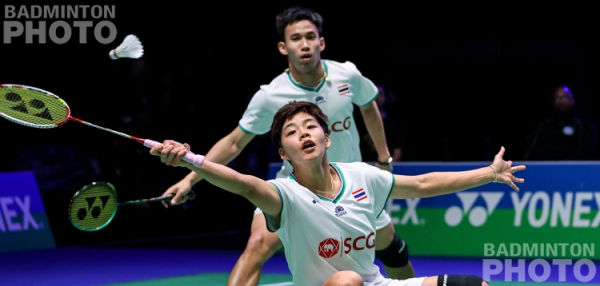
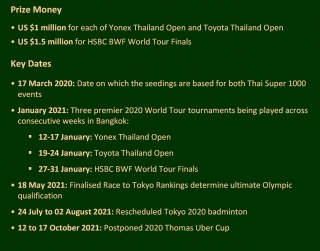
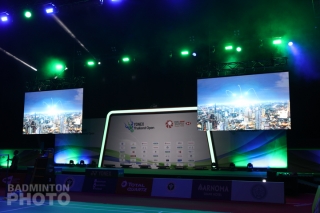
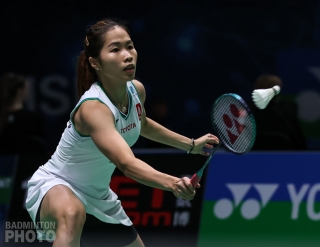
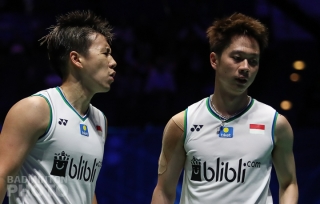
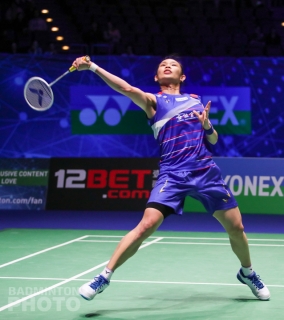
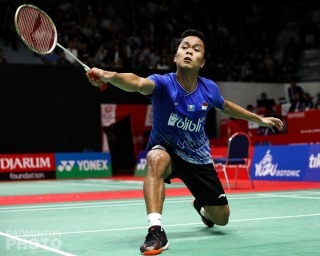
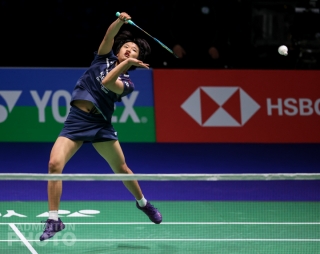
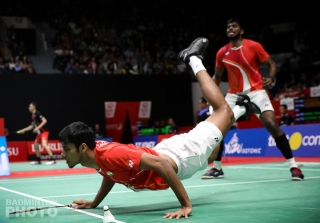
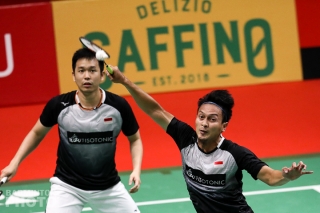
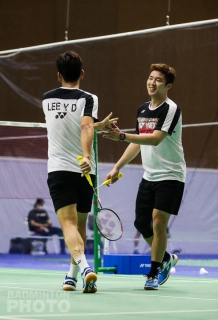
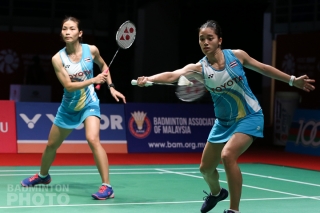
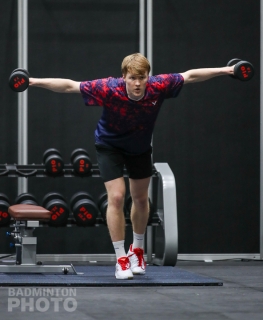
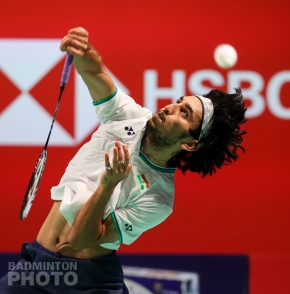
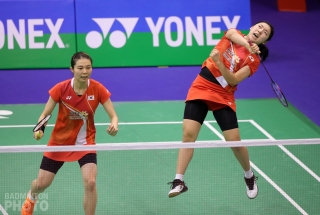


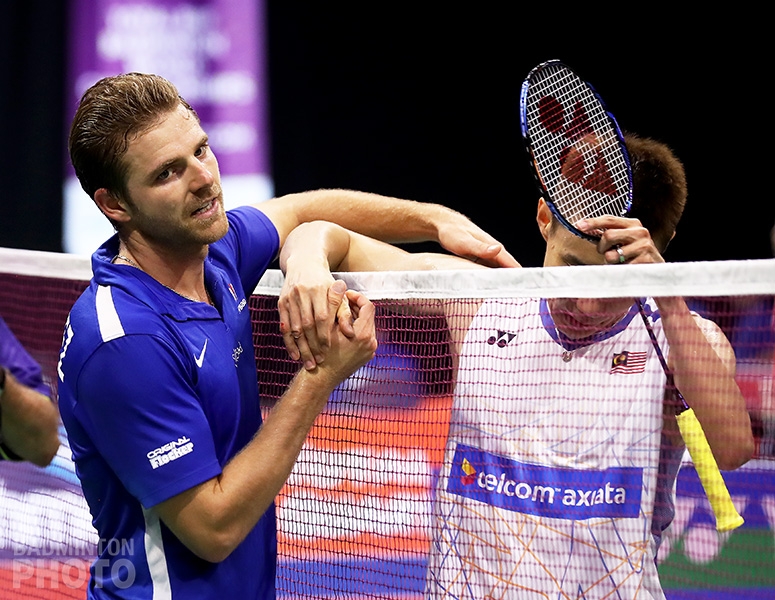
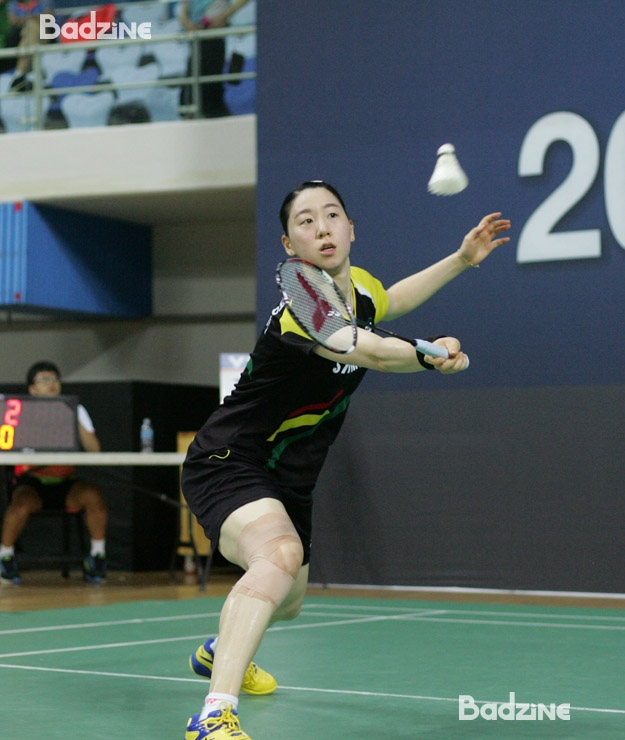
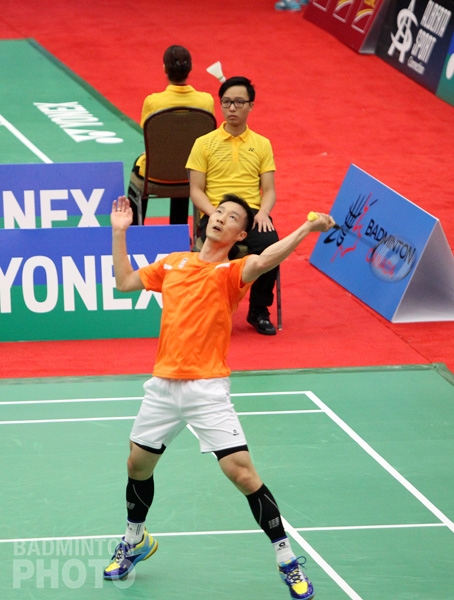
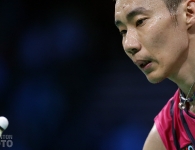
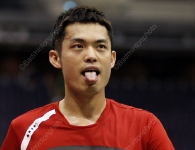
Leave a Reply